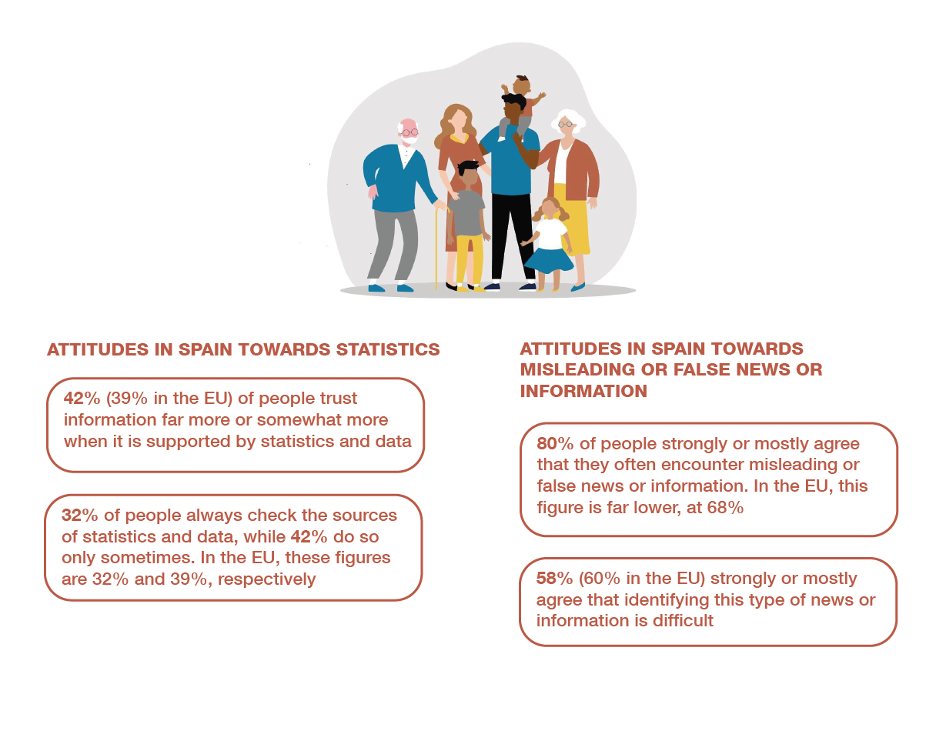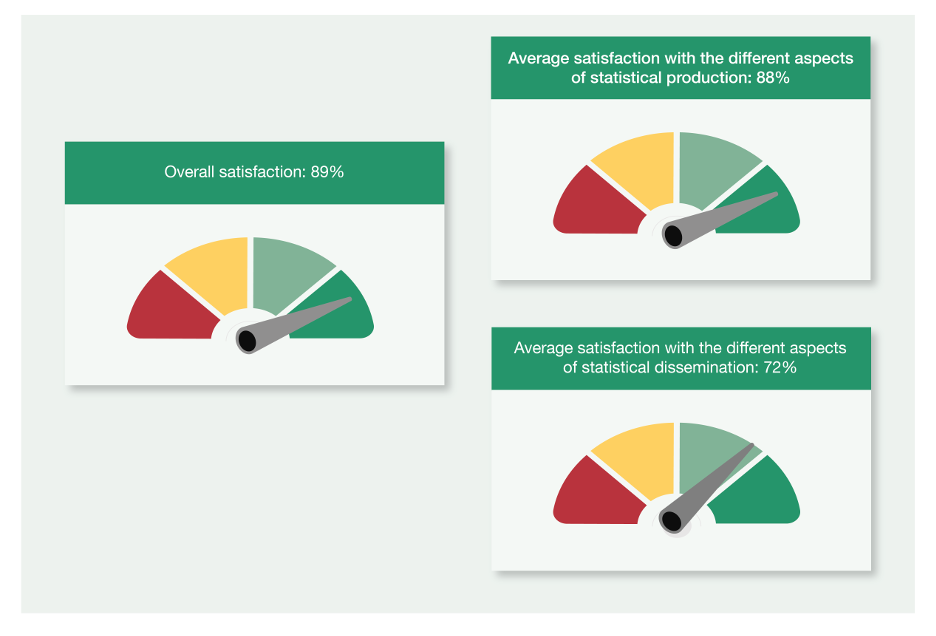What makes (official) statistics reliable
In today’s information age, the sheer volume and availability of data is overwhelming. Identifying reliable information is a challenge that we all face as members of the public. Official statistics offer a dependable source of trustworthy information.
The digital revolution has resulted in an “information overload”, with all kinds of people exposed to vast amounts of information, often whether they are interested in it or not. While making information more accessible is a good thing, we are now inundated with data from a multitude of sources. It is often hard to tell what information is truly useful and, moreover, reliable. Statistical information and data have also proliferated. Statistics are immensely valuable because they help us measure and understand the world around us in all its forms, guiding our decisions as consumers, business owners, voters and members of the public. However, their appearance of rigour and exactitude opens the door to disinformation. So, how can we navigate this sea of data and information with any confidence? What makes official statistics trustworthy?
Some of the statistical information we come across lacks any kind of “designation of origin”: we have no idea how or where the data was collected, or even by whom. At times, statistics are based on just a few observations, or data are simply replicated from other sources and trusted to be reliable. New technologies, such as generative AI![]() , provide a wealth of opportunities, but they can also spread unfounded information or “hallucinations”
, provide a wealth of opportunities, but they can also spread unfounded information or “hallucinations”![]() . In certain instances there is malicious intent, adding to the growing problem of disinformation
. In certain instances there is malicious intent, adding to the growing problem of disinformation![]() .
.
We all know that information can be misleading or even false. But most of us don’t fully appreciate the importance of statistical information and the need for it to come from reliable sources. This is evident in the results of several Eurobarometer![]() surveys (see Figure 1). In this, the Spanish public is no different from the broader EU population, except that it tends to perceive a greater volume of false information.
surveys (see Figure 1). In this, the Spanish public is no different from the broader EU population, except that it tends to perceive a greater volume of false information.
Figure 1
ATTITUDES IN SPAIN TOWARDS STATISTICS AND FALSE INFORMATION

SOURCE: FUENTE: Eurobarometer![]() (Flash 536 and Standard 100, Fall 2023).
(Flash 536 and Standard 100, Fall 2023).
How can we tell if data or statistics are trustworthy?
In a nutshell, reliable statistics should be compiled:
- meticulously;
- by someone with no conflicts of interests;
- according to pre-established and published rules;
- and distributed with full transparency.
Official statistics meet all of these requirements: they follow a stringent and verifiable set of methodological principles, identical to those established by the international community. The officials who compile them are independent, neutral and professional. In Spain’s case, they are based at the Instituto Nacional de Estadística![]() (the National Statistics Institute), the Banco de España and other public institutions.
(the National Statistics Institute), the Banco de España and other public institutions.
The Banco de España’s statistics meet the most stringent quality requirements, underpinning their reliability
The statistics prepared by the Banco de España adhere to the highest standards, as specified in the ”Public commitment on European Statistics by the ESCB”![]() , and aligned with the standards established by both the European Union and the United Nations. In addition to adhering to this public commitment, the Banco de España’s statistics are subject to scrutiny and verification by international institutions.
, and aligned with the standards established by both the European Union and the United Nations. In addition to adhering to this public commitment, the Banco de España’s statistics are subject to scrutiny and verification by international institutions.
Preparing quality information requires time
A demand for high quality sources and procedures reinforces the quality, rigour and reliability of information, but has implications in terms of speed:
- Less immediacy in the publication of findings: ensuring that the data from statistical sources is as complete as possible, checking that it is correct and applying rigorous processing methods requires time, meaning that findings are published later.
- Time needed to adapt when new phenomena emerge: in these cases, it is not always easy to access reliable information sources that adhere to an internationally agreed and well established methodology, which delays the release of statistics about novel developments.
Earlier and more detailed information
To shorten the time between the observation of a phenomenon and publication of the related findings, those of us involved in preparing statistics are striving to access sources earlier and to speed up data processing. For some variables we offer "flash" information, i.e. statistical information based on those data sources that are available earlier, completed with estimates, and which provide a good approximation of the final data. New data processing techniques (“data science”![]() ) also help us meet this goal, in addition to improving data accessibility and visualisation.
) also help us meet this goal, in addition to improving data accessibility and visualisation.
We are focusing on streamlining the publication of statistics and on reacting swiftly to new phenomena
The 2008 financial crisis and the COVID-19 pandemic have underscored the need to react faster to the emergence of new phenomena. Projects like the Data Gaps Initiative![]() launched by the G-20 have focused on the ability to react swiftly and some progress has already been made in this regard. A greater availability of granular (i.e. very detailed) data allows us to prepare some statistics (such as financial statistics) faster.
launched by the G-20 have focused on the ability to react swiftly and some progress has already been made in this regard. A greater availability of granular (i.e. very detailed) data allows us to prepare some statistics (such as financial statistics) faster.
Also, “experimental statistics”![]() are starting to be more widely used. These statistics are disseminated even before fully reliable sources and well-established methodologies are available. The aim is to have information on new phenomena as soon as possible.
are starting to be more widely used. These statistics are disseminated even before fully reliable sources and well-established methodologies are available. The aim is to have information on new phenomena as soon as possible.
The Banco de España wants reliable, useful and accessible statistics
The preparation of statistics at the Banco de España is subject to the positive considerations mentioned above and also to the limitations associated with official statistics. It is rewarding to see that, according to the latest satisfaction survey![]() (see Figure 2), the users of our statistics consider them highly trustworthy.
(see Figure 2), the users of our statistics consider them highly trustworthy.
Figure 2
USERS ARE SATISFIED WITH THE STATISTICS OF THE BANCO DE ESPAÑA

SOURCE: User satisfaction survey for the statistics of the Banco de España 2023![]() .
.
Official statistics are a public service and should therefore serve society. This is why the Banco de España is working to make its statistics more accessible and comprehensible for the public at large. We are making headway on this front.


